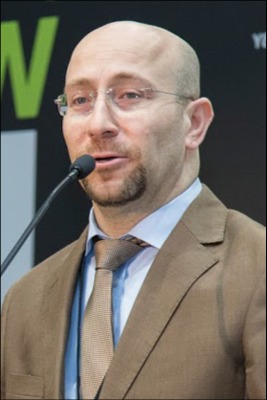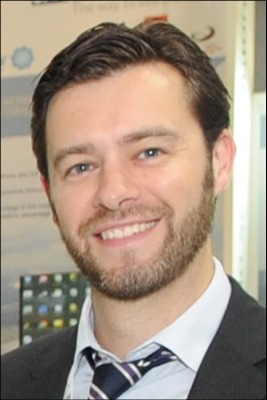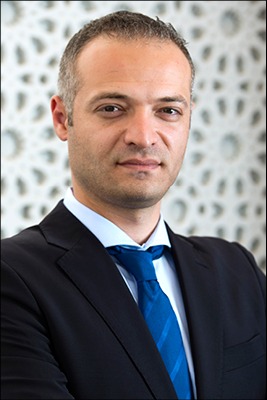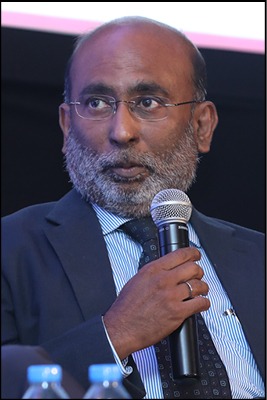Participants in the Plenary Discussion of the third edition of CPI Industry IAQ Webinar series, titled ‘The Air We Breathe’, spoke of gaps in the design, construction and handover phases of buildings and what they mean in view of the COVID-19 pandemic, which has trained the spotlight on the importance of placing greater focus on occupant health in buildings. Hannah Jo Uy presents key highlights from the discussion…

Dr Stephanie Taylor
“How does the building profession suddenly embrace health metrics?” This was the question Dr Stephanie Taylor posed to her fellow panel members. As a physician and an architect, Dr Taylor is aware, perhaps more so than anybody, of the gap that exists between the medical and engineering communities, from her experience as an Infection Control Consultant for Harvard Medical School and as a Member of the ASHRAE Epidemic Task Force. Physicians, and the medical community at large, can be especially resistant to change, she admitted. However, she said, engineers have sometimes showcased the same attitude, recalling being told once: “We are into testing and balancing of equipment. You are telling us to test and balance human beings, that’s not our area of expertise.” She said: “But, engineers need to learn medicine. Because us physicians, we are a little more resistant to change, though some of us are trying.”
For Dr Taylor, the urgency of closing this gap has been made clearer in view of COVID-19, which has trained the spotlight on the contribution of the built- environment towards the health of its inhabitants. In line with this, Dr Taylor has staunchly advocated for the needfor 40-60% relative humidity to help contain the spread of COVID-19 virus, and presented medical case studies in support of this claim.
REVISITING EXISTING STANDARDS
In agreement was Dominic Mc Polin, who said that, without a doubt, there is a journey to be made between science and practice and that this “journey has to be as short as possible”. As Chief of Central Planning Office in the Ministry of Works, Municipalities Affairs and Urban Planning, Bahrain, Mc Polin said there has to be government directive and intervention, similar to the lockdown or social distancing initiatives, in order to recognise the importance of Dr Taylor’s findings on relative humidity. “We are in the middle of an emergency, and it’s hard for us in government making regulations, who are concerned with energy efficiency,” he said. “We have green building codes we are drafting, as we speak, and enforcing. Suddenly, in the middle of this pandemic, we are asked to change regulations.”

Dominic Mc Polin
Mc Polin pointed out that regulators are faced with the challenge of having to filter the correct information in their decision making, which can prove to be difficult. “There is an awful lot of fake news and solutions from vendors, who see this as an appropriate technology to offer,” he said. “But, for the government, we are looking for good science. We need this good science to allow us to quickly intervene on taking the hit, and it is a hit. We must recognise that we must take a hit on energy efficiency, if we are to switch our priority from energy efficiency to public health in our sealed buildings. This is the front line and this is the moment where we have to come clean with good science and discard the fake news. It is not a marketing situation, it is science, and we will come and look for the technology from vendors, once we have clarity on the science.”

Dr Iyad Al Attar
Dr Iyad Al Attar, independent air filtration consultant, also underscored the medical community’s important contribution towards improving the built-environment, adding that not enough is being done to capture the existing science and information and putting it into practice. “How did we end up here after 100 years of Spanish Flu?” he asked. “Our learning curve has not been steep enough. In the past 60 years, there were a lot of tools to diagnose, characterise and prepare our response time, but COVID-19 paid a visit and found us absolutely weak.”
Dr Simon Hugh Miller, Conformity Programs Specialist, Conformity Programs & Research Department, Abu Dhabi Quality and Conformity Council (ADQCC), shared a similar sentiment, adding that that there is still scope for improvement with regard to existing codes, standards and regulations, especially when taking into consideration the new science and tools that have emerged. Sharing challenges ADQCC has faced in relation to product conformity, he said: “It is important to remember that when it comes to codes, the purpose of the AC systems in most of our buildings is to condition the air not to treat or limit infection control. Controlling humidity is an excellent example, where we have science behind it to help the situation, considering buildings can be infection control facilities. The availability of products that can help retroactively can be applied, but we have to be wary they are backed with good science.” Miller said new, reliable information can be integrated with building codes which could be useful in mitigating potential future threats.
Agreeing with the general line of the discussion, Eyad Ismail, Group Director of Engineering, Ras Al Khaimah Economic Zone (RAKEZ), underscored the importance of reassessing existing codes when it comes to retrofitting, which has traditionally focused on energy efficiency. “COVID-19 has opened our eyes on the human side of the building,” he said. “There are many things to look at and to consider, and going forward this is how we are thinking. There has to be greater clarity and understanding for codes and standards in place, to make buildings more suitable for living and to make saving lives a priority.”

Dr Simon Hugh Miller
For Dr Al-Attar, it is imperative for the industry to place international standards “under the analytical knife” and get a clearer idea of where the industry has come from and, more importantly, where it is headed. “Do we actually adhere to the standards we are having since the 1960s?” he asked. “If we have, and it failed, it means it is responsible for the situation we have today. If it has not, then it has been incapable of confronting the pandemic viruses we face today. We need not only to question or revisit but to challenge the standards and find out if they are enough for us to tackle the situation. For me, it is unacceptable that we have an industry equipped with top-notch technologies but we are locked at home for three months and see economies falling. The gap between technology and application has gotten way too big. We need to not only revisit international standards but also question our seriousness on how much are we willing to change and turn the table on its head.”
IDENTIFYING THE GAPS

Eyad Ismail
Such a change is long overdue, according to stakeholders, considering many buildings in the region continue to perform very poorly. Providing a consultant perspective, Kandasamy Anbalagan, Managing Partner, Proleed Engineering Consultants, said that poorly performing buildings exist, because there is a gap between the design intent and execution of a project. “For many buildings in Dubai, though the Municipality has good codes and standards and they check the design in the submission and building permit stage, when a project is done and handed over to the client, often, the building is not performing or functioning as per design intent,” he said.
Prabhakar Naik, Managing Director, Base VASTU and ENGG Services FZE, confirmed this, discussing one project, a school, which has continued to operate despite what he described as improper HVACR design and supervision. “Most of the time, it is running at 80% humidity and that means these children will get lung infection easily,” he said, adding that overdesigning humidity is only one of the many issues that emerged, following a post-mortem audit of the project.

Kandasamy Anbalagan,
Also sharing his experience when it comes to poorly designed projects in the region, Barry Wormald, Director of Building Performance, AESG, said: “In one of the newest, high-quality residential buildings in Dubai, we checked the fresh air rates and exhaust rates to individual apartments, and we found that in a building less than 12 months, the fresh air is 27% and 46% of what it should have been. We are getting half of the ventilation rates we should be getting. Now, this is signed off by a team of people qualified to sign it off.”

Prabhakar Naik
Wormald said that the underlying factor behind these issues is that there is a palpable disconnect among the building owner, operator, manager and user, which often leads to improper commissioning of systems. Anbalagan added that the situation is further aggravated by the pace at which buildings are handed over in Dubai. “Installation consumes 95-98% of the project time, and we are left with little time allowed for commissioning,” he said. “In residential, commercial and rental facilities, it takes typically 8-10 weeks for proper commissioning of buildings.” However, he said looming occupancy deadlines and project delays can mean buildings are not commissioned or handed over properly, which only comes to light during energy audits.
Wormald said a way to address the issue of commissioning would be to design a simpler and more intuitive system and ensuring it is tested properly. For Mohamed Zachariah, Chief Consultant, Suhaimi Design Protecooling, stronger implementation of Guideline Zero could resolve the connectivity problem, pointing out that this commissioning process standard from ASHRAE outlines basic requirements that should be adhered to. “There is a commissioning agent or party onboard from the beginning to capture owner’s project requirement, and those requirements have to permeate through the design process; and the design intent has to be permeated to the contractor and construction team, then commissioning,” he said. This, Zachariah said, is the commissioning process; however, he said, often these considerably basic guidelines are not being followed even in important institutional projects. As a result, Zachariah said that many buildings not commissioned in the beginning would have to go through retro-commissioning, the process by which existing equipment and systems are brought up to original design intended operation.

Barry Wormald
Ismail, while echoing the importance of proper design, installation and commissioning in building performance, also put the spotlight on operation and maintenance. “That is one of the issues in many buildings with many landlords,” he said. “The system was perfectly designed, perfectly commissioned, but they are not maintaining and operating appropriately. Then, you won’t get the results you need from the machine. It’s like running a car without sufficient oil. Not replacing a refrigerant in the chiller, as per the manufacturer’s recommendation, these things are causing a lot of issues for many buildings all over the world. You need proper FM.”

Mohamed Zachariah
For Wormald, a core issue, when it comes to gaps that ultimately lead to poorly performing buildings, is how often projects change hands in the region, which has only increased over the past few years. “Before, there was the architect, engineer and the client,” he said. “I would ask the client what he wanted, his issues, design the system, install and commission the system, and for 12 months I would make sure it worked well. I don’t think I’ve been in a project in 10 years where the team that handed over the building is the same one that started the process. Too many people get involved and fall out of the process.”
The need for continuity in responsibility, said Dr Taylor, is an important theme running across discussions on challenges facing the built-environment. While there is much work to be done, she urged the industry to be kind to itself and take a closer look at existing tools and technologies in answering what can be done to make sure buildings are operated correctly, and to ensure more continuity between the building owner and manager to ultimately make a good building, in terms of optimising energy use and safeguarding health.
Copyright © 2006-2025 - CPI Industry. All rights reserved.